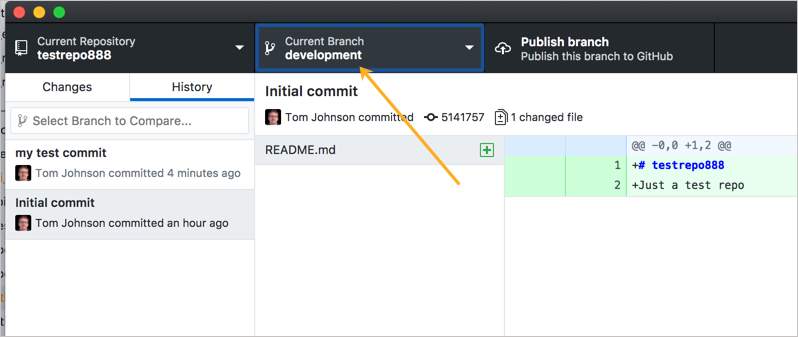

Inspect the changes to your local repository.Ĭongratulations, you’ve made it to the end! If you’d like to explore more, head to the Learn More page.īrought to you by the McMaster University Library and the Lewis & Ruth Sherman Centre for Digital Scholarship.Keeping a clean git history can save a lot of time when trying to track down commits related to a bug or issue that is disrupting dev efforts.Note: git pull actually runs two processes: fetch (get changes) and merge (place in your directory).Pull (fetch and merge) changes: git pull origin master.In git Bash, you can check changes (before merging them) with: git fetch, and then git diff origin master.Verify your changes in your GitHub repository.main specifies the branch of the git repository that you’re working on as the source data. GitHub) repository that is the target of your ‘push’. In this example – which is the default case – origin specifies the remote (i.e.Push changes to the target GitHub repository using the command: git push origin main.To check if there are connected remote repositories use the command: git remote -v.Push changes to GitHub (remote) repository OR add and commit all at once: git commit -a -m ''Ĥ.OR Add all items to this list of tracked files: git add -all.Add new items to the list of tracked files (individually): git add.have not been added to the index), and those that are being tracked and have been modified. This will provide a list of items that are not yet being tracked (i.e.In git Bash, check the status of your repository (i.e.In your local repository folder, open one of your Markdown (.md) files in a text editor.
#GITHUB DESKTOP MERGE MASTER INTO BRANCH DOWNLOAD#
Git should now download the contents of your GitHub repository to a new folder in your current directory.Enter the command: git clone, where is the URL you copied in the previous step. Open Git Bash in the desired directory for your repository.


This commits your changes to your local repository (but not yet to your GitHub one!).
#GITHUB DESKTOP MERGE MASTER INTO BRANCH CODE#
In the root of your GitHub repository (click on the Code tab to get there) click the green Code button.In this step, you will clone your existing GitHub repository to your local computer so that you can work on files locally.


 0 kommentar(er)
0 kommentar(er)
